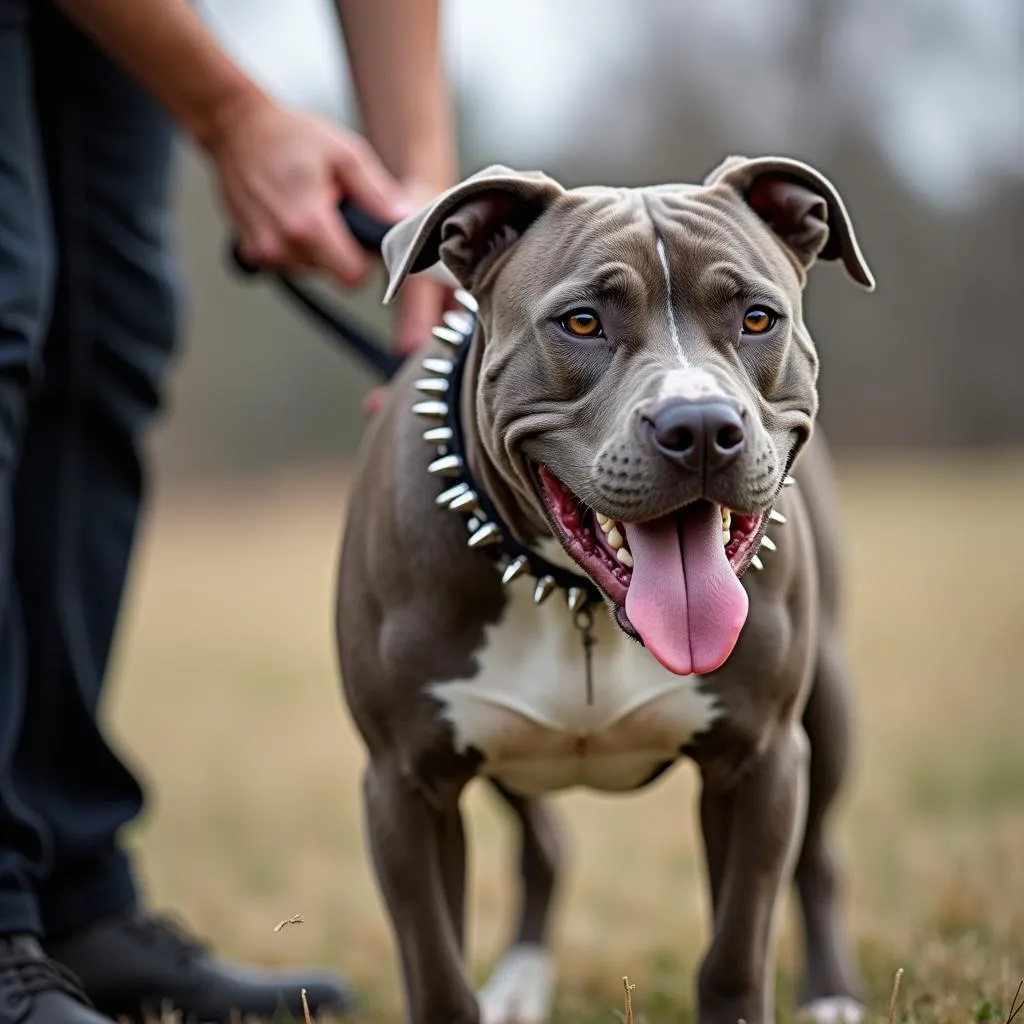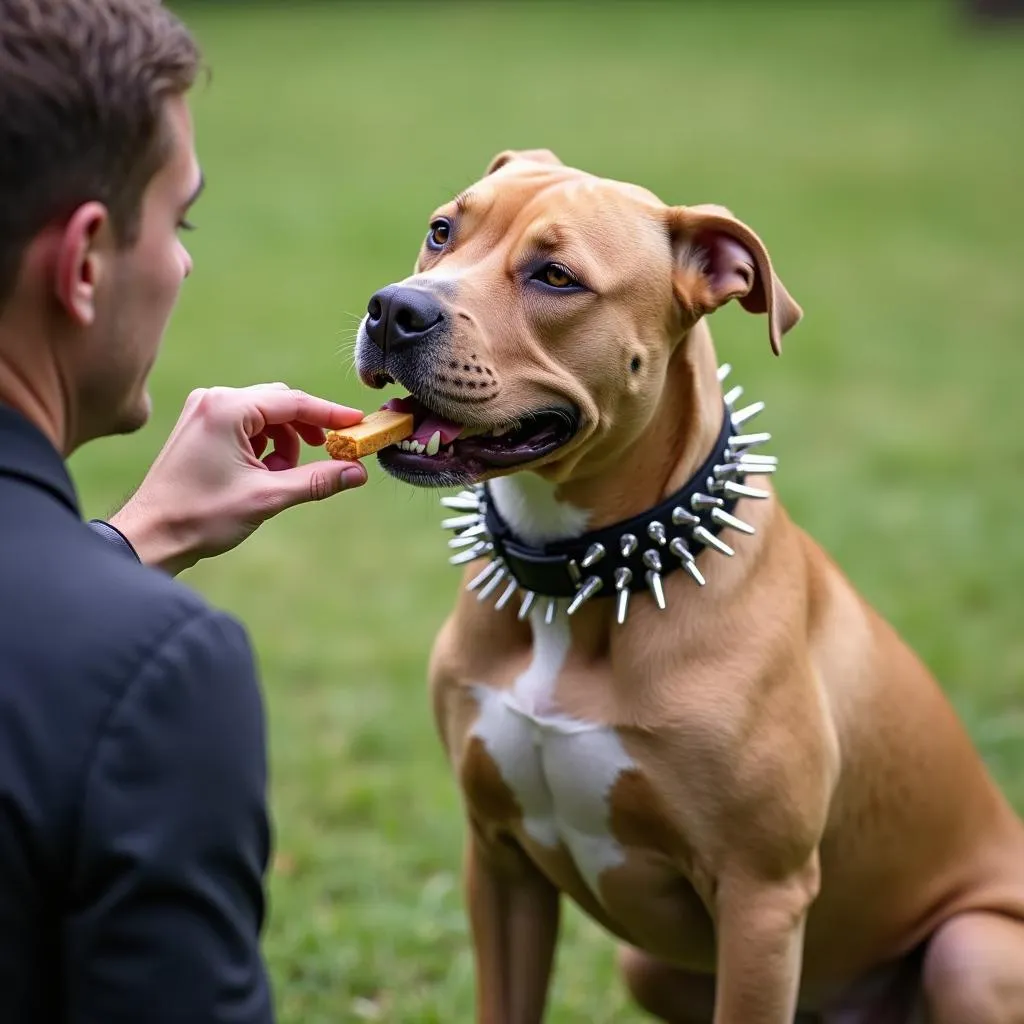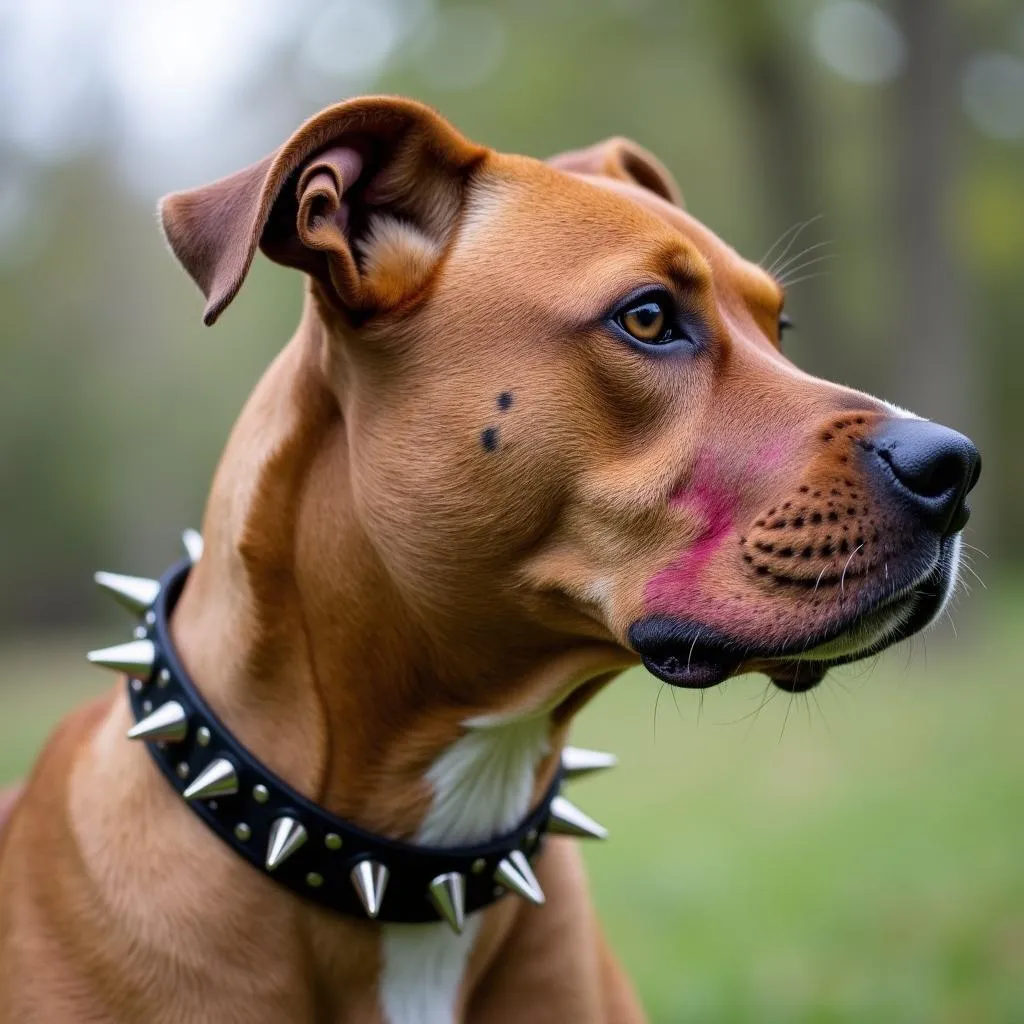“Con chó cắn không nể mặt ai”, a Vietnamese proverb reminding us that a dog’s bite can be a serious matter. When it comes to Pitbulls, known for their strength and protective nature, concerns about their behavior often arise. This is where the idea of using spiked collars for Pitbulls comes into play. But are these collars safe and effective?
What Are Spiked Collars?
Spiked collars, also known as prong collars, are dog training tools designed to discourage unwanted behaviors. They work by applying pressure to the dog’s neck when they pull on the leash, creating a discomfort that makes them less likely to repeat the behavior.
How Do Spiked Collars Work?
These collars feature blunt spikes or prongs that dig into the dog’s skin when pressure is applied. The discomfort caused by the spikes is meant to serve as a deterrent, teaching the dog to respond better to commands and walking on a loose leash.
Are Spiked Collars Safe for Pitbulls?
While spiked collars can be effective for some dogs, their safety is a subject of debate. Many experts, like Dr. Nguyen Van Thanh, a renowned veterinary specialist in Hanoi, argue that these collars can cause pain and injury to dogs, especially those with sensitive skin or necks.
Potential Risks of Using Spiked Collars
- Skin irritation and injuries: The spikes can cause scratches, cuts, and abrasions on the dog’s neck, especially if the collar is improperly fitted or used aggressively.
- Neck pain and discomfort: The pressure from the spikes can cause pain and discomfort, potentially leading to behavioral problems.
- Training complications: Some dogs may become fearful or aggressive when wearing a spiked collar, making training more challenging.
- Health risks: In some cases, spiked collars may also cause damage to the trachea or other internal organs, especially if the dog pulls hard or panics while wearing it.
Alternatives to Spiked Collars for Pitbulls
Fortunately, there are safer and more effective alternatives to spiked collars for training Pitbulls. These methods focus on positive reinforcement and building a strong bond between the dog and owner.
Positive Reinforcement Techniques
- Reward-based training: Use treats, praise, and other positive reinforcement to encourage good behavior.
- Clicker training: This method uses a clicker to associate specific behaviors with positive rewards, making learning faster and more enjoyable for the dog.
- Leash training: Teach your dog to walk calmly on a loose leash through gradual and consistent training sessions.
- Socialization: Early socialization is crucial for Pitbulls to develop positive interactions with people and other animals, reducing the risk of unwanted behaviors.
Conclusion: Choosing the Right Approach
The decision of whether or not to use a spiked collar for your Pitbull should be made in consultation with a qualified dog trainer or veterinarian. Consider your dog’s individual temperament, training needs, and your own comfort level. Remember, always prioritize safety, well-being, and positive reinforcement in your relationship with your furry companion.
 Pitbull wearing a spiked collar during training
Pitbull wearing a spiked collar during training
 Pitbull being trained with positive reinforcement
Pitbull being trained with positive reinforcement
 Pitbull with neck injury from spiked collar
Pitbull with neck injury from spiked collar
If you have any further questions or need assistance with training your Pitbull, feel free to contact us at 0372960696 or email us at [email protected]. You can also visit us at 260 Cầu Giấy, Hà Nội. We have a team of pet care professionals available 24/7 to support you and your furry friend.
Leave a Reply
You must be logged in to post a comment.